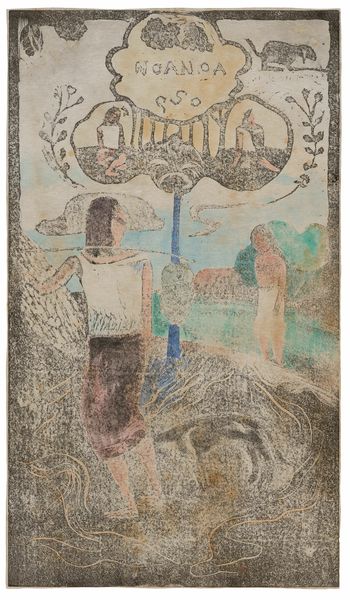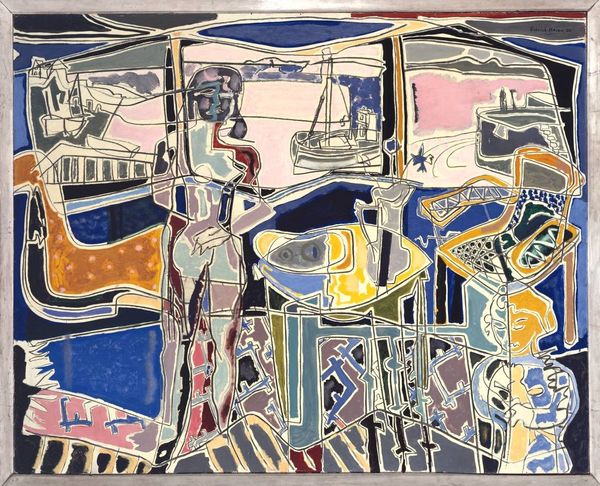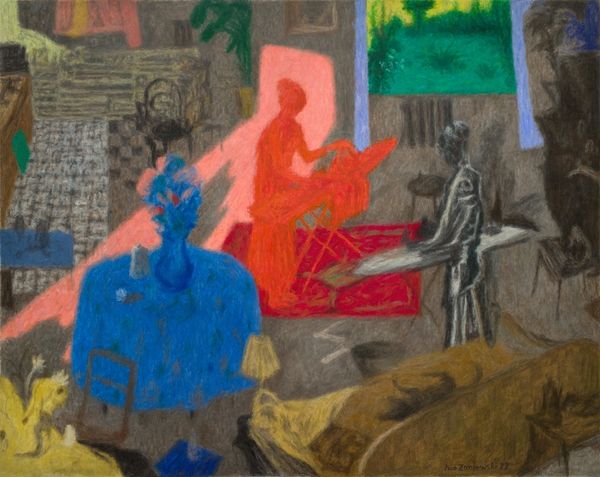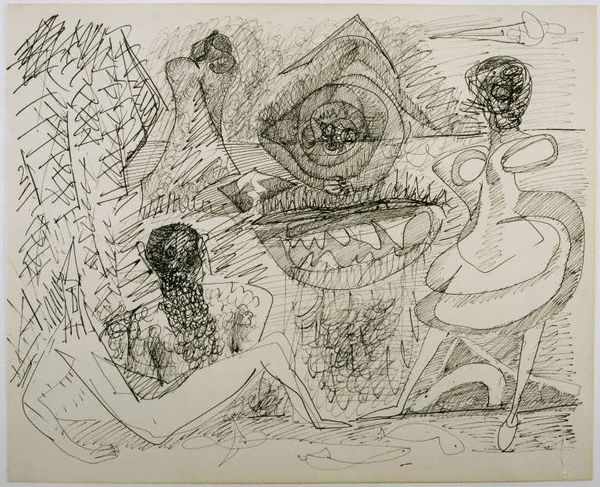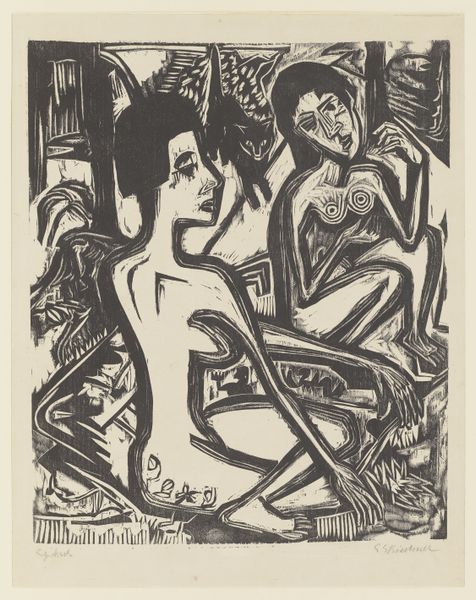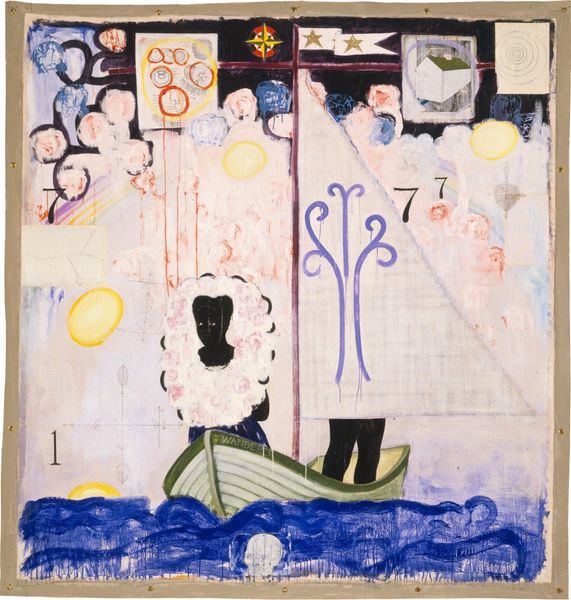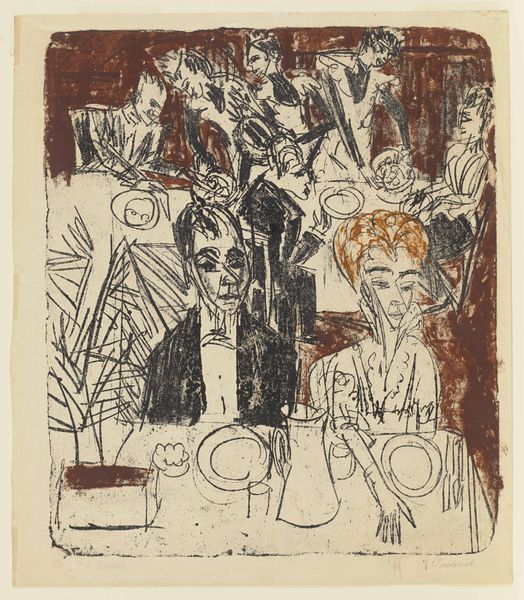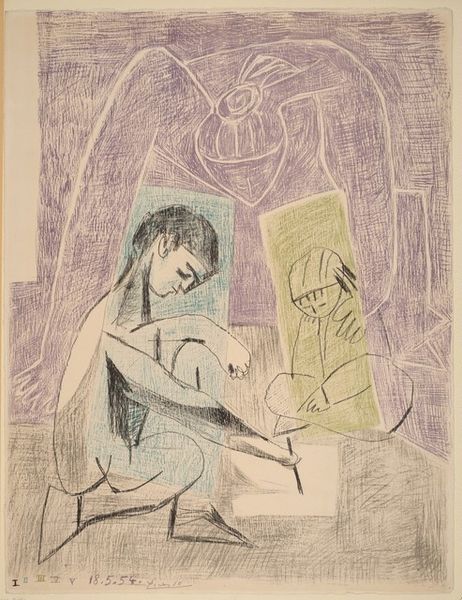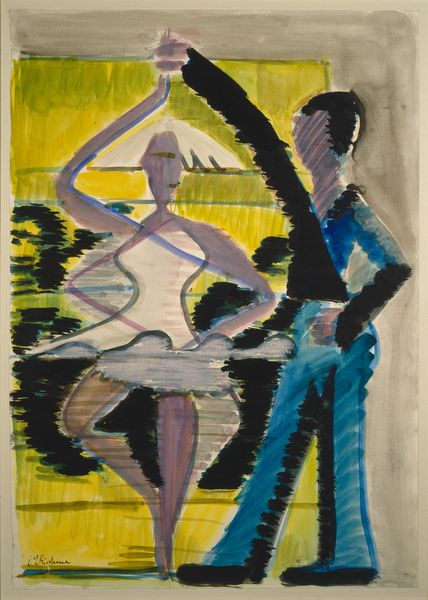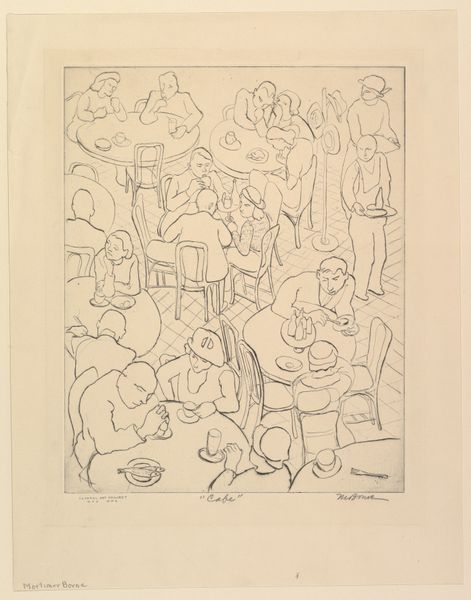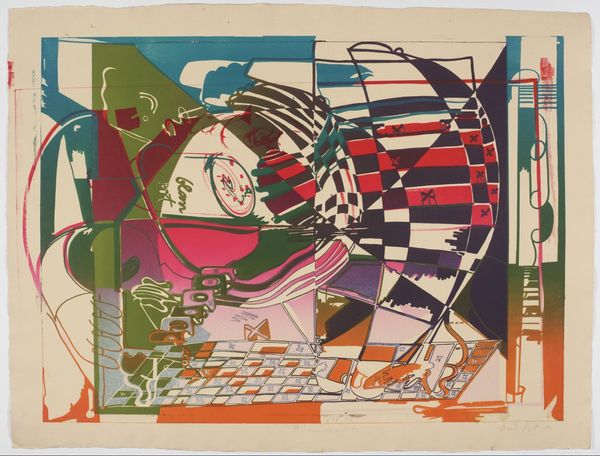
Dimensions: frame: 1365 x 1147 x 30 mm support: 1220 x 1004 mm
Copyright: © Estate of John Craxton/DACS 2014 | CC-BY-NC-ND 4.0 DEED, Photo: Tate
Curator: What a curious composition. I’m immediately struck by the child’s reaching hand – there’s a real sense of wonder. Editor: Indeed. This is John Craxton’s "Still Life with Cat and Child." While undated, it is held at the Tate Collections and offers a glimpse into Craxton’s unique artistic vision. Curator: Looking closely, the table is laden with sea creatures. It feels almost like a surreal theatre set, prompting questions about the intersection of childhood imagination and the natural world. Editor: Absolutely. Considering Craxton’s engagement with post-war British art and his fascination with Mediterranean culture, one could see this as an exploration of freedom after constraint. The imagery certainly invites broader interpretations about play, exploration, and societal constructs. Curator: The flattened perspective and simplified forms are interesting too. It is as if Craxton is challenging traditional notions of realism to prioritize emotional expression. Editor: It leaves us to contemplate how spaces, whether domestic or imagined, mold the development of identity through interaction. I find it all quite intriguing. Curator: Me too. Craxton's "Still Life" encourages us to engage our critical and imaginative faculties.
Comments
tate 6 months ago
⋮
http://www.tate.org.uk/art/artworks/craxton-still-life-with-cat-and-child-t06999
Join the conversation
Join millions of artists and users on Artera today and experience the ultimate creative platform.
tate 6 months ago
⋮
Craxton first became known for his dreamy, symbolic images painted when he was associated with the Neo-Romantic movement, which sought to combine the poetic traditions of English landscape with the innovations of Modernism. After sharing a studio with Lucian Freud and working with Graham Sutherland in the early 1940s, he visited Greece in 1946 and fell in love with the country. He settled in Crete in 1960 and started making pictures that embody a Mediterranean view of life. Here, the marauding cat and child blend with the other creatures on the table, suggesting the interconnection of all living things. Gallery label, August 2004
